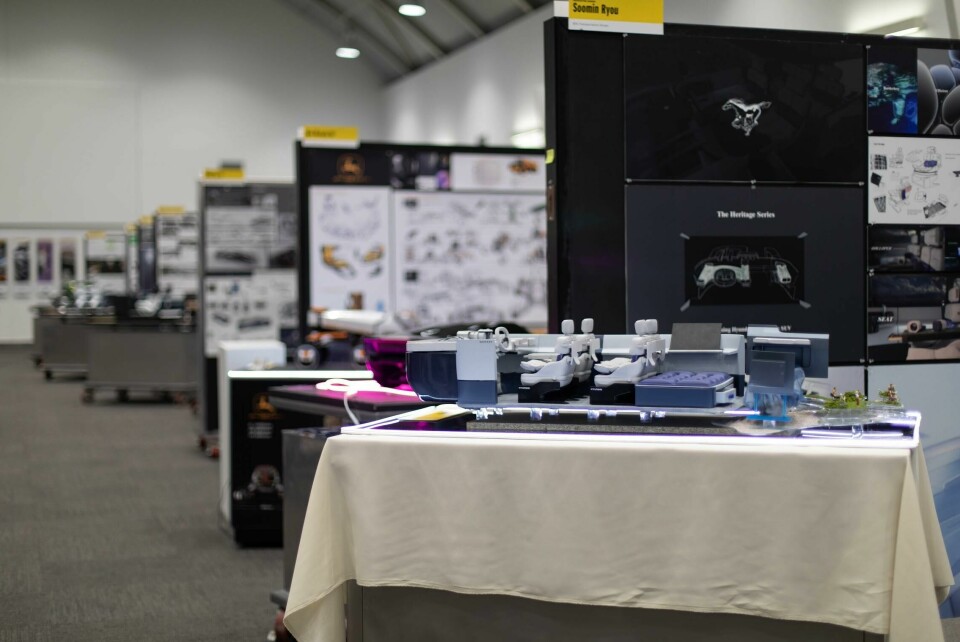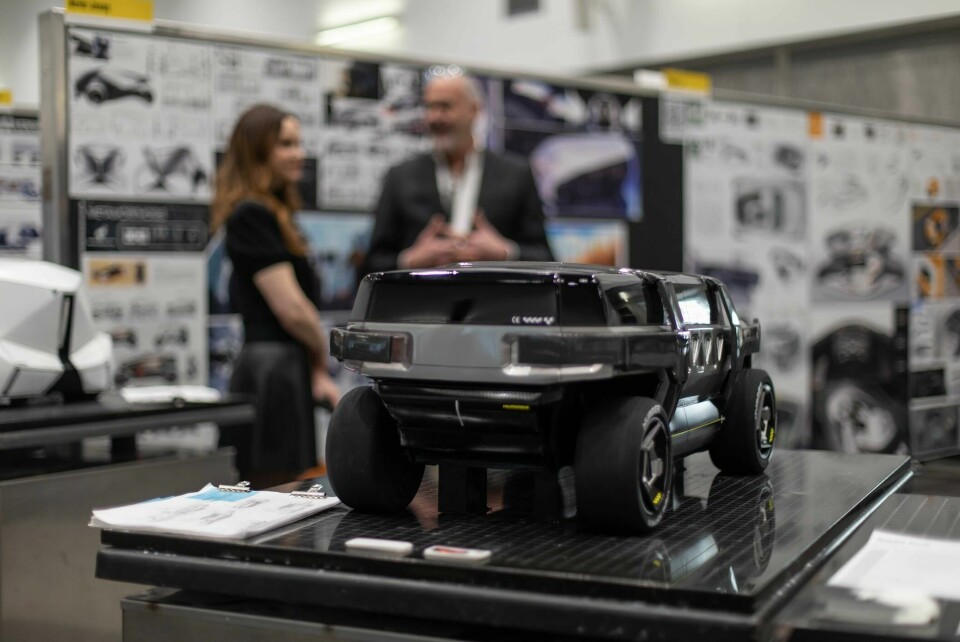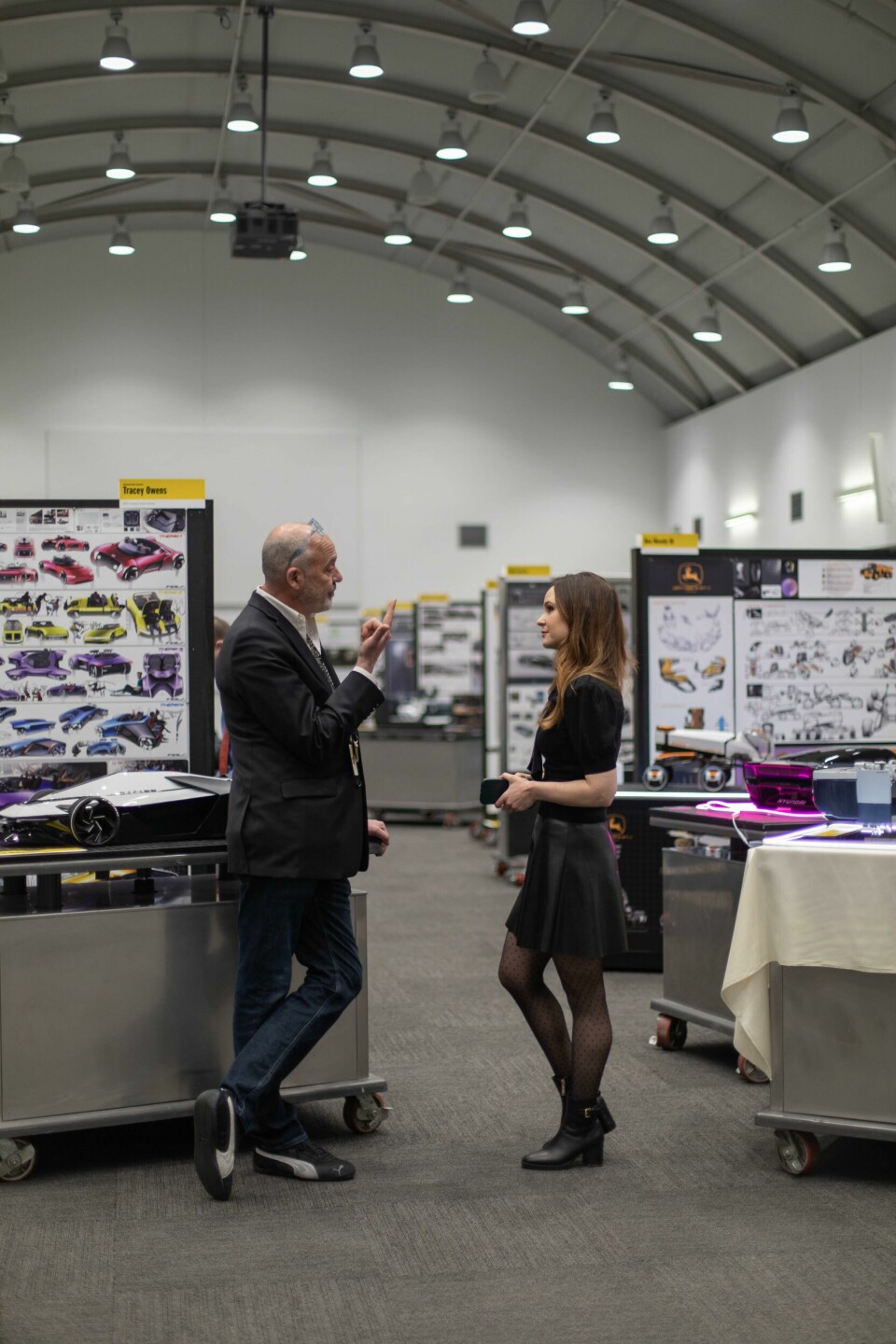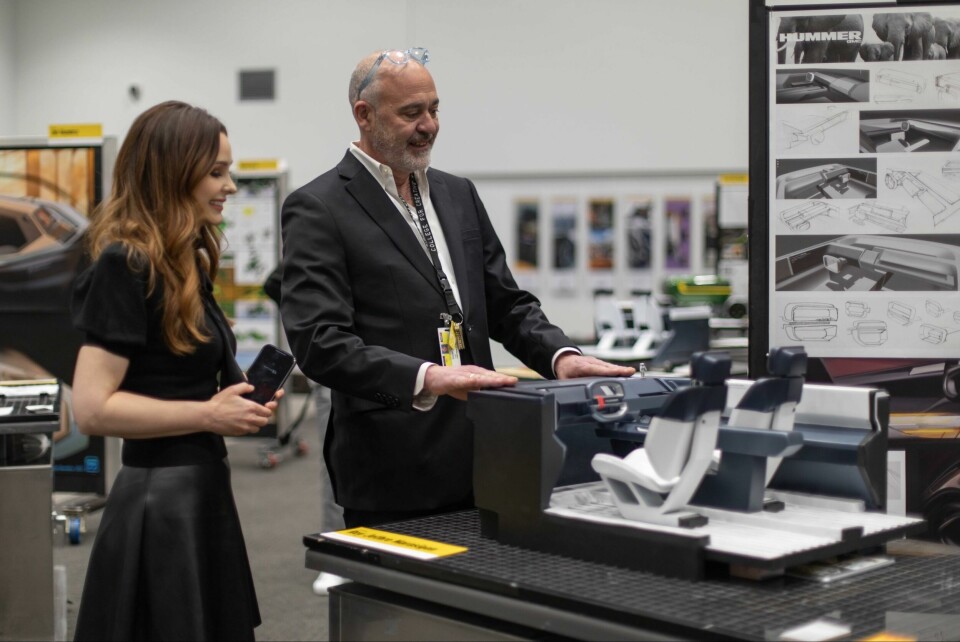
CCS Transportation Design Chair Paul Snyder on the future of design education
CDN caught up with Paul Snyder from the College for Creative Studies, the Detroit-based mainstay of car design schools
At this year’s College for Creative Studies (CCS) Industry Day, North American correspondent Laura Burstein got some quality face time with the transportation design chair Paul Snyder to talk AI, hiring prospects, and how design education is — and should be — changing.
Laura Burstein: You’ve been chair of the undergraduate design transportation program at CCS for more than eight years. You saw the department through COVID and now students have returned full time to the classrooms. What changes have you seen in the past year?
Paul Snyder: Most of our internal meetings are still happening by Zoom, but the classroom hasn’t really changed that much. Throughout the COVID period everyone was doing more digital, but we’re trying to get back to basics now a little bit more. We had our juniors doing tape drawings this semester and doing clay models, and the seniors are trying everything. We even dabble a little bit in AI.
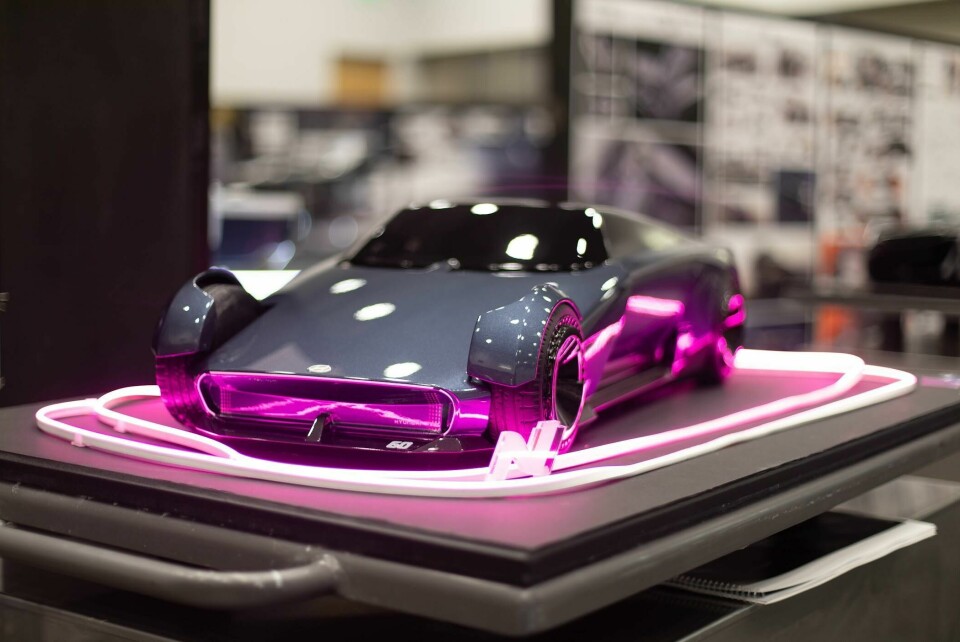
LB: Of course we need to talk about AI, the elephant in the room. How do you see that affecting design education, as well as prospects for young designers entering the workplace right now?
PS: We’re still trying to figure that out. You talk to the OEMs and they don’t want to see any AI in a portfolio. But at the same time, they’re using it internally. So we’re between a rock and a hard place. On one hand you have an aversion and a fear that what you’re looking at may not authentically be the student’s work, and on the other hand you have working designers actually using it. We formed an AI academic advisory team in January and we’ve had two meetings a week this semester talking about this.
LB: How has that affected CCS policy and curriculum?
PS: We’re trying to come up with a policy, but it’s a moving target. We’re comfortable with the idea that it’s out there and that people are going to use it no matter what we do, but what we’re not comfortable with is not knowing if they’re using it. There’s a lot of talk about allowing it in process. There are so many different design theory processes.
We’re going to allow it in some cases. Nothing in a final portfolio, though
For example, Kevin Hunter, back in the 80s, filled a balloon with plaster and pressed it between his forearms and then he’d take pictures of that and stretch and morph the forms, [author’s note: done at CALTY’s Laguna Beach studio in 1985, under the direction of studio VP Katsushi Nosho]. And you can do that with AI; you can let it generate whatever it wants and then play with it. So that would be process; your ideas are derived loosely around that and then you’re sketching from it.
But AI can also make persona creation easy. Instead of spending hours on Pinterest looking for the right customer profile picture, you can just type it in and see what it gives you. We’ve come up with no solid conclusions other than we’re going to allow it in some cases. Nothing in a final portfolio, though.
LB: Any other tools that you’ve leaned on more heavily in the past year?
Gravity Sketch has been really aggressive. They sponsor multiple things here and at ArtCenter, and they’re co-sponsoring something in the fall. Whether or not ideating in virtual 3D is right for everybody remains to be seen. I wouldn’t say we needed that, but it’s good we have it. It was certainly critical during COVID because you had senior management being able to check models in China without having to come to Detroit.
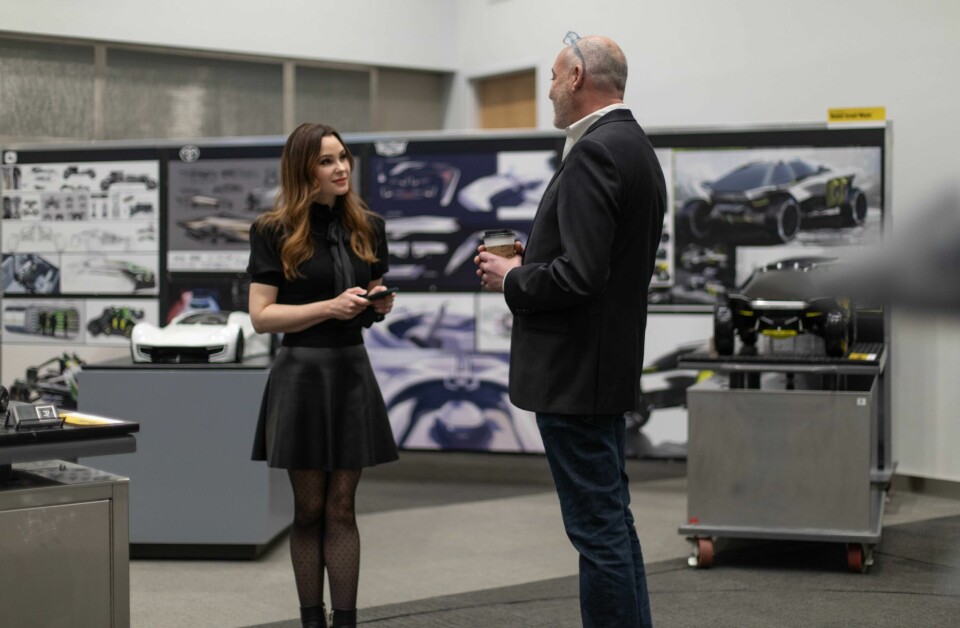
LB: We’re seeing more design positions filled by people who come from other disciplines, such as industrial design, as well as the fashion and footwear industries. How is this affecting design education, and what is CCS doing to ensure that young designers have a broader depth of experience?
PS: It’s actually affected institutions in terms of departments. Here at CCS we have an interaction design department, and our traditional graphic design department has been renamed to communication design. Our UX/UI programs come out of communication design and also out of our graduate program. This is a good thing. If students all come to transportation design wanting to be an exterior designer, there’s going to be a lot of disappointed students because we can’t all do that.
You have to be diverse… you don’t want to narrow your prospects
In my department, I encourage students to diversify. We have one student who’s showing his work today, he can obviously do exterior design but he took a semester and did an agricultural vehicle project sponsored by John Deere. So somebody like this could do an exterior, an interior, and what we call a vocational vehicle – a vehicle with a job. So they’re thinking like industrial designers, they’re thinking like stylists, they’re thinking like UX/UI designers. You have to be diverse and you don’t want to narrow your prospects.
LB: Historically CCS has been a funnel into the “Big Three” American car companies: Ford, General Motors, and what is now Stellantis. But you also want to become more international. How do you expand students’ opportunities beyond Detroit?
PS: Many of our students would like to work elsewhere, but the Big Three are hungry and they sponsor a lot of projects. I’d love for our students to travel more. We have a sister program with Strate and Pforzheim, and we’re working on one with Coventry. It’s a little bit tricky with Asia because of the language barrier but we’re also talking to a couple of schools in China.
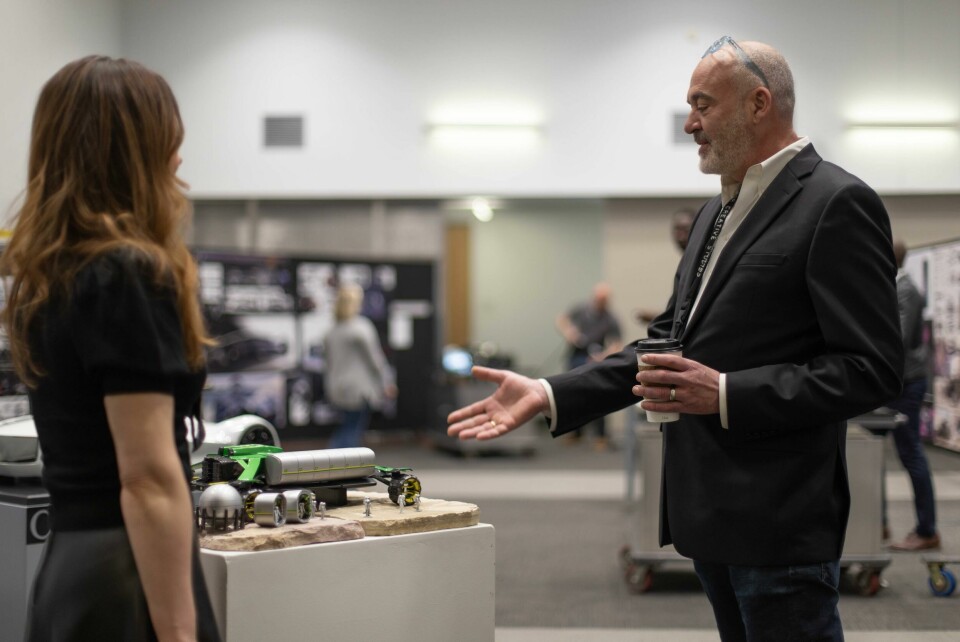
LB: Along those lines, all of the Big Three have announced substantial company-wide cutbacks. Have you guys felt the pinch at CCS? And as these companies scale back, where else are the opportunities right now?
PS: I think we’ve felt it maybe a little bit. We graduated a cohort in December and a few of those students got jobs. Three of them went to Stellantis. Will they be hiring people today? Maybe not. GM didn’t pick up anybody that I can recall in December, and they have been letting people go, so we will see. [Author’s note: GM’s top brass including Michael Simcoe, Crystal Windham, Jeff Nield and Bryan Nesbitt walked through the door shortly after.] Rivian has been pretty connected, and GAC has been pretty aggressive. Kia and Hyundai are expanding rapidly, and the Hyundai group is also diversifying their product portfolio, so they’re looking at students who are interested in mobility in a broader sense.
I don’t want my students to learn one thing in school but get to the real world and it’s something totally different
LB: Any trends you’re seeing right now with the students who are coming in, and what kind of work they’re doing? Other than AI, of course.
PS: I don’t have the hard data, but I think there are more women. And in regard to design trends, we had a GM-sponsored project for GMC. And with that brand, you’re going to expect some rigid surfacing, but everybody was doing these ultra-flat surfaces. I don’t know if that’s a trend, but everything is looking like that this year. I’m like, don’t you guys want to put some sensual surfacing in there, a little bit of curve?
LB: I just came from the media briefing for the redesigned Ford Ranger and the designers said they got specific feedback from the global markets that customers wanted a more American-looking truck, so they made everything much more upright, more tough looking. Do you think students are picking up on that as well, especially being based here in Detroit?
PS: I do think there’s something about that in the US and Europe. There’s a lot of danger — or perceived danger — out there, so I think that might be part of the psychology of wanting something that looks a little tougher, more efficacious and utilitarian like a Hummer, like a Bronco like a Jeep. But I’m speculating.
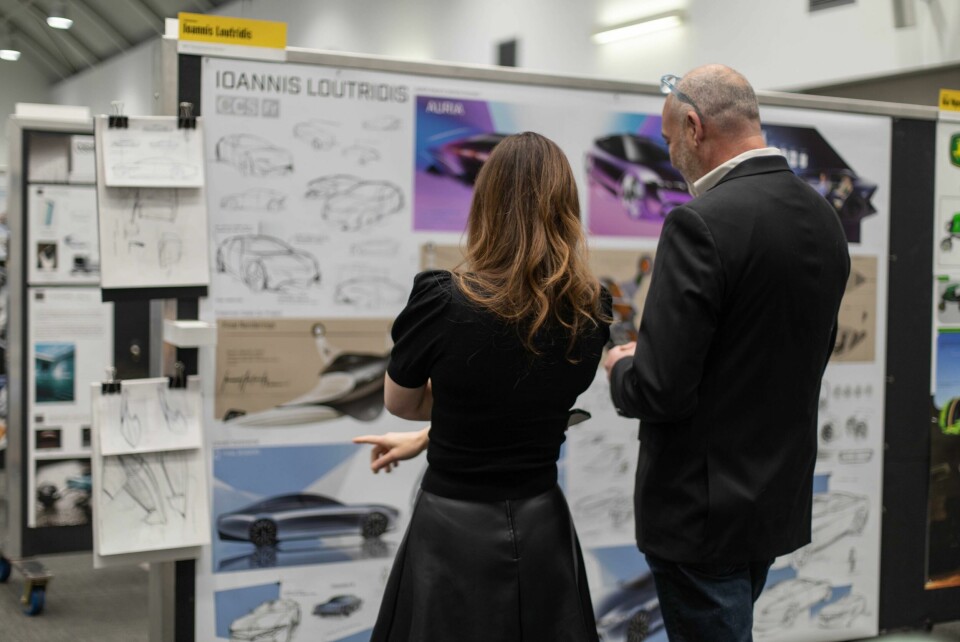
LB: What are some other challenges design education is facing right now? How can institutions like CCS tackle these issues, and what can employers do to help?
PS: It’s a dream request, but it would be nice if everybody was on the same page. I don’t want my students to be disillusioned when they leave here, where they learn one thing in school and then get to the real world and it’s something totally different. One will say, “cheat the package,” another will say, “this is totally unrealistic; why is the glass body-colored? You can’t see out of this thing,” so mixed messaging and things like that.
People skills to some extent can be taught, but as creatives, we are dysfunctional misfits
When I have OEM representatives come down here and say “don’t worry about the package, I just want to see your creative vision,” that’s great. But let’s say someone goes to work on GMC interiors and here’s the package, and you’re not going to have a chance in hell of changing that package, so it’s a very different scenario than what they’re getting in school.
Workshops and those kinds of things could really be useful. But the challenge is, students have to cram so much information into four years already. After that you almost need a graduate program to learn how the business really works.
LB: Another thing we’ve talked about a lot is that in creative vocations such as design, leadership skills are rarely taught throughout the educational process. So as designers move up the ladder and become managers, it can create challenges because they haven’t been taught those skill sets. How can schools like CCS better prepare designers to take on these roles?
PS: We’ve talked about having a program like that here, it’s in the early stages of discussion. It’s tricky because people skills to some extent can be taught, but as creatives, we are dysfunctional misfits anyway. And I’ll be the first to admit I’m right up there. We call ourselves the “department of bring your whole self to work.”
LB: Any other thoughts on the state of the industry right now?
PS: We need to get the word out that this is a valid career. So many people still don’t know that transportation design and even industrial design exists. In our MFA program, a lot of the students come from an undergrad in engineering or medicine because their fathers and mothers want them to be very secure in their choice of career. They don’t realise that this is an alternative to all of that, it’s a great field with a lot of future.
